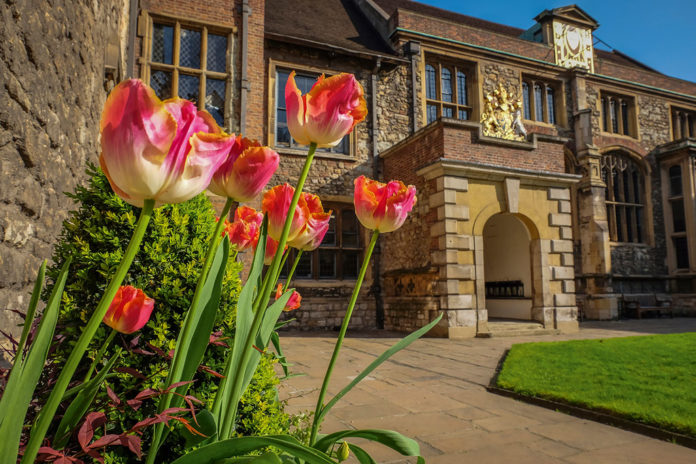The high walls of this historic London site have concealed everyone from monks and royals to schoolboys and ‘Brothers’ in need.
By Charlotte Borger
For centuries the Charterhouse lay hidden behind imposing high walls, with few knowing what lay within. In 2017, parts of the wall were removed, an eye-catching new entrance was created, and this extraordinary seven-acre historic site, nestling between Barbican and Farringdon in the City of London, was revealed to the public for the first time.
The site dates back to 1348, when the Black Death ravaged London and the land was used as a burial ground – startling evidence of which was unearthed a few years ago, when the new Crossrail railway started tunnelling its way through the area.
The Charterhouse was built in 1371 as a Carthusian monastery – Europe’s largest – which flourished right up to early Tudor times. After the Dissolution, the building became a Tudor mansion, home to nobility and a refuge for royalty; having closed down the monastery here Henry VIII stored his hunting equipment in the church.
But the Charterhouse is not just a piece of ancient heritage; it has played an important part in England’s social history from the 17th century on – and is still fulfilling its charity mission today. In 1611 Thomas Sutton bought the Charterhouse and established
a charitable foundation that provided for up to 80 Brothers: ‘either decrepit or old captaynes either at sea or at land, maimed or disabled soldiers, merchants fallen on hard times, those ruined by shipwreck or other calamity’, as well as Charterhouse School for impoverished scholars. The school has since moved to Surrey, while the almshouse continues to flourish right in the heart of London to this day.
A tour of the site reveals thrilling episodes, from the grisly martyrdom of Carthusian monks to the dodging and diving of Tudor nobleman Edward North; from the preparations of a young Elizabeth I prior to her coronation to tales of the early students of Charterhouse School, including William Makepeace Thackeray and John Wesley.
The stunning buildings have compelling stories to tell – look out for the portraits of the many Dukes associated with the Charterhouse; the carved graffiti on panelling and windows; and the decorations ordered for the Great Chamber by the 4th Duke of Norfolk while he was under house arrest, which appear to give away his treacherous loyalties. The museum, free to explore, is packed with intriguing details about the building’s previous inhabitants.
To immerse yourself in the site’s turbulent history, it’s worth taking one of the daily tours – either with a professional guide or with one of the current residents of the almshouse. Still known as the Brothers (though women are now welcome too), the residents give a unique perspective on the history through the eyes of someone still benefitting from the legacy left by Thomas Sutton over four centuries ago.






 © 2024
© 2024